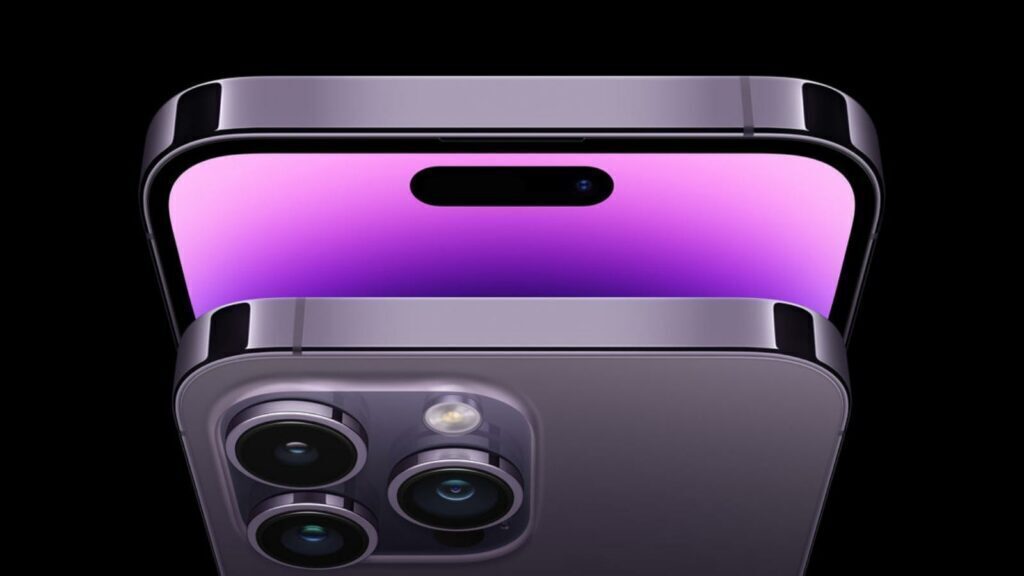The big takeaway from Apple’s over-hyped new gadget announcement last week was not the massive upgrade of the new iPhone 14 but of the original PC maker’s continued ability to spin a decent reality-distortion field. The phrase that emerged from the recorded briefing – in and about Apple’s remarkable circular headquarters in Palo Alto – was “dynamic island”. I removed the caps to keep us a little bit saner.
There it was, in full sight after such a long absence, Apple’s amazing skill at producing Steve Jobs’ famous reality-distortion field. It has become institutional.
Trapped on Apple’s dynamic island
Dynamic island is the name for the new multi-functional notch (the cut-out of black at the top of an iPhone screen for its cameras and sensors) which can now also show you notifications. Apple describes it as “a truly Apple innovation that’s hardware and software and something in between. It bubbles up music, sports scores, FaceTime, and so much more – all without taking you away from what you’re doing”.
Who wouldn’t be convinced by that sentence, or the rave reviews that Apple’s spokespeople gave, well, of their own product?
But to be clear, reducing the size of the blacked-out screen real estate – needed for the necessary sensors and selfie camera – has been done by the Android makers for years, arguably led by Samsung’s tiny so-called punch hole. Ultimately, what we’re talking about here, essentially, is a notifications upgrade. So much hype, so much gullibility.
And it’s a software trick, not an innovative new hardware change. These annual upgrades are augmentations, annual boosts to performance, and a slightly faster, better chip. Oh, and this year the ability to send an emergency SMS to a satellite – only in North America at the moment, so don’t get lost while hiking in the Karoo y’all.
Apple’s hardware goes Ultra
The hardware upgrades this year are its so-called ceramic shield (sans caps) screen, which Apple claims is “tougher than any smartphone glass” and a 48-megapixel camera. “At last!” many people exclaim to the latter. However, Samsung’s top-end Galaxy Ultra handset has a 108MP camera for the third year in a row.
The iPhone 14 Pro’s lock screen (again, I’ve spared you the capitals) is now always on, showing you the time and updates. Or, as Apple puts it, it “is always glanceable, so you don’t even have to tap it to stay in the know”.
Again, something that Samsung, Huawei, Nokia and all the other Android makers have been doing for years.
I read through the tech specs page on Apple’s website to find the size of the battery, but Apple doesn’t specify that, instead listing how many hours of video or audio playback you get. The interwebs report that the smaller-sized iPhone 14s (6.1-inch screen) has 3,200 mAh, while the 6.7-inch Plus and Max hold about 4,325 mAh. Why couldn’t they just list that?
But what is very interesting is that Apple is ditching the SIM tray in some models (again, only in North America) for a digital eSIM, or electronic SIM. I am an avowed fan of eSIMs, having used them for years for travelling; using KnowRoaming.com, run by South African-born Gregory Gundelfinger. They are a game changer, especially for travelling, and my many experiences with them have proved that they work.
Arguably the most interesting new hardware announcement was the Watch Ultra, which even die-hard Android fans told me they wanted. This beefed-up wrist computer has better battery life in its chunkier titanium frame and might give Garmin a run for its money in the high-end active smartwatch segment. I’m a non-practising fitness fanatic, so I can’t really give you an opinion – bar that longer battery life is always better.
Does this year’s much-hyped iPhone launch signify it is still the pioneer at innovation, or just that it still knows how to Harry Potter up a good reality-distortion field?
- This column originally appeared in the Daily Maverick 168 newspaper



